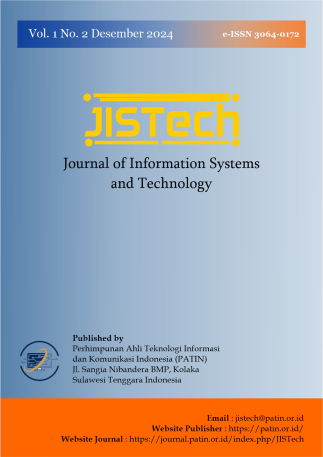Analisis Perilaku Sosial Masyarakat Terhadap Pandemi Menggunakan Metode Fuzzy C-Means
Keywords:
Fuzzy C-Means, social behavior, COVID-19 pandemic, health protocols, vaccinationAbstract
The COVID-19 pandemic has significantly altered social behavior worldwide, including in Indonesia. To understand society's response to the pandemic, this study employs the Fuzzy C-Means (FCM) method to cluster social behavior based on three main criteria: adherence to health protocols, attitudes toward vaccination, and access to information. Data were collected from 67 respondents through an online questionnaire and analyzed using a fuzzy-based clustering approach that allows each respondent to have membership degrees in more than one cluster. The study identified three primary clusters. Cluster 1 consists of individuals with high adherence to health protocols and a positive attitude toward vaccination, with access to valid information. Cluster 2 represents individuals with moderate adherence and a neutral attitude toward vaccination, and variable access to information. Cluster 3 comprises individuals with low adherence to health protocols, negative attitudes toward vaccination, and a reliance on unverified information sources. This study reveals that access to valid information plays a significant role in shaping individuals' attitudes toward vaccination and compliance with health protocols. The Fuzzy C-Means method proved effective in identifying diverse social behavior patterns, offering a comprehensive understanding of society's response to the pandemic. The findings of this study are expected to contribute to the formulation of more targeted public policies to address different societal groups
References
[1] J. Nayak, B. Naik, and H. Behera, “Fuzzy C-Means (FCM) Clustering Algorithm: A Decade Review from 2000 to 2014,” Smart Innov. Syst. Technol., vol. 2, pp. 133–149, 2015, doi: 10.1007/978-81-322-2208-8.
[2] M. Sutoyo, “Implementation of Fuzzy C-Means for Grouping Socio- Economic Statuses,” in Proceeding of USN Kolaka-ADRI International Conference on Sustainable Coastal-Community Development, 2020, vol. 1, no. January, pp. 94–103, doi: 10.31327/icusn-adri.v1i0.1147.
[3] A. A. M. Jamel and B. Akay, “A survey and systematic categorization of parallel K-Means and fuzzy-C-Means algorithms,” Comput. Syst. Sci. Eng., vol. 34, no. 5, pp. 259–281, 2019, doi: 10.32604/csse.2019.34.259.
[4] A. K. Dubey, U. Gupta, and S. Jain, “Comparative study of K-means and fuzzy C-means algorithms on the breast cancer data,” Int. J. Adv. Sci. Eng. Inf. Technol., vol. 8, no. 1, pp. 18–29, 2018, doi: 10.18517/ijaseit.8.1.3490.
[5] M. Sutoyo and A. Sumpala, “Penerapan Fuzzy C-Means untuk Deteksi Dini Kemampuan Penalaran Matematis,” Sci. J. Informatics, vol. 2, no. 2, p. 129, 2016, doi: 10.15294/sji.v2i2.5080.
[6] Z. Cebeci and F. Yildiz, “Comparison of K-Means and Fuzzy C-Means Algorithms on Different Cluster Structures,” J. Agric. Informatics, vol. 6, no. 3, pp. 13–23, 2015, doi: 10.17700/jai.2015.6.3.196.
[7] Y. Zheng, B. Jeon, D. Xu, Q. M. J. Wu, and H. Zhang, “Image segmentation by generalized hierarchical fuzzy C-means algorithm,” J. Intell. Fuzzy Syst., vol. 28, no. 2, pp. 961–973, 2015, doi: 10.3233/IFS-141378.
[8] H. Koohi and K. Kiani, “User based Collaborative Filtering using fuzzy C-means,” Meas. J. Int. Meas. Confed., vol. 91, no. May, pp. 134–139, 2016, doi: 10.1016/j.measurement.2016.05.058.
[9] F. S. D. Arianto, A. Wibowo, and B. Surarso, “Modifikasi Metode Fuzzy C-Means untuk Klasifikasi Citra Daun Padi,” Inform. Mulawarman J. Ilm. Ilmu Komput., vol. 17, no. 1, p. 22, 2023, doi: 10.30872/jim.v17i1.6068.
[10] M. Ula, M. Ula, D. Yulisda, and S. Susanti, “Fuzzy C-Means with Borda Algorithm in Cluster Determination System for Food Prone Areas in Aceh Utara,” Ilk. J. Ilm., vol. 15, no. 1, pp. 21–31, 2023, doi: 10.33096/ilkom.v15i1.1481.21-31.
[11] G. S. Nugraha, R. Dwiyansaputra, F. Bimantoro, and A. Aranta, “Implementasi Fuzzy C-Means untuk Pengelompokan Daerah berdasarkan Persebaran Penularan Covid-19,” J. Teknol. Inf. dan Ilmu Komput., vol. 10, no. 1, pp. 97–104, 2023, doi: 10.25126/jtiik.20231015796.
[12] M. Sutoyo, R. Wardoyo, and A. Musdholifah, “Kombinasi Fuzzy C-Means Clustering dan MADM Model Yager Untuk Menentukan Kelompok UKT (Studi Universitas Sembilanbelas November Kolaka),” Universitas Gadjah Mada, 2015.
[13] M. Sutoyo, N. Rhita, and N. Hayaty, “Penerapan Fuzzy C-Means Untuk Mengelompokkan Kemampuan Dasar Berhitung dan Hasil Belajar,” 2014.







